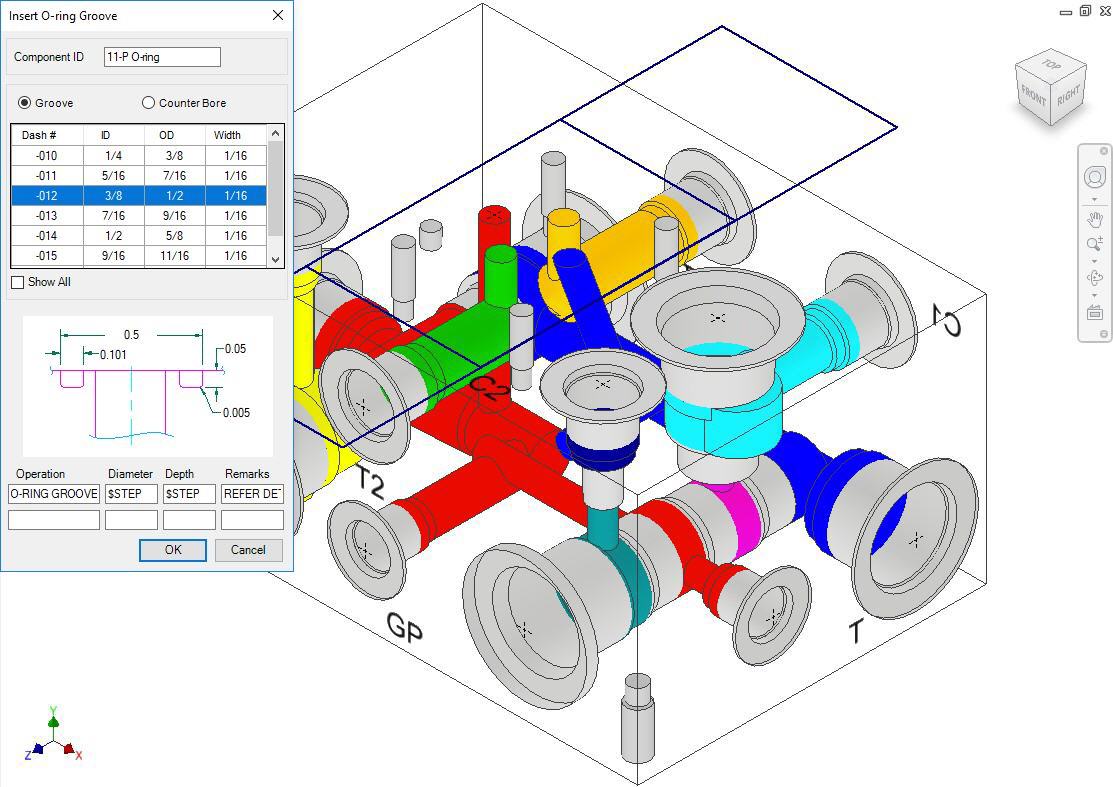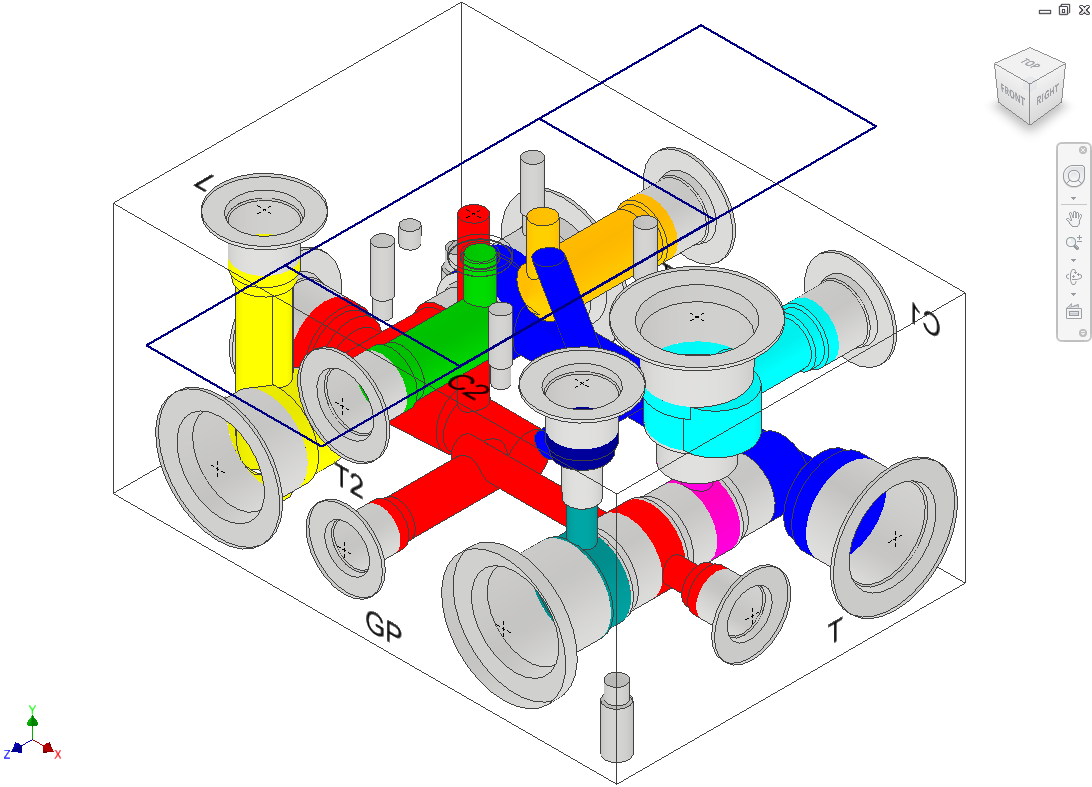
O-ring grooves are created around the blind holes of footprints on the manifold surface to fit O-ring seals to make these holes leak proof. This section shows how such grooves are modeled using MDTools® 775.
1. MDTools 775 ribbon > Insert panel > Mounting Holes drop-down > O-ring Groove
The MDTools Select Cavity dialog box displays.
2. Select the cavity in which you want to insert the O-ring groove.
The Insert O-ring Groove dialog box displays.

3. Modify the Component ID.
Component ID of O-ring defaults
to Component ID of the selected cavity with text “O-ring” as suffix.
For example, if the component ID of the selected cavity is 23, then the
default component ID of O-ring is 23 O-ring.
4. Select the O-ring size to automatically specify the groove dimensions.
5. Click OK.
MDTools inserts a groove to the specification.

Note
§ Select Show All, to view all the O-ring grooves available in the library.
§ O-ring data is stored in MDTools Cavity Library.
§ MDTools automatically creates a groove when inserting a cavity, if an O-ring is attached to that cavity in MDTools Library.
§ Add/Modify the O-ring data through MDTools Library Manager.
§ Add the machining details such as Operation, Tool Name, Diameter, and Depth with the cavity.
§ O-ring details are displayed in the drawing sheet via Machining Chart.
§ Use $STEP for the Diameter and Depth field for easy maintenance of the Machining Chart information.
§ $STEP for Depth is measured from the surface of the manifold in the Machining Chart.
§ $STEP takes the outer diameter as the Diameter value in the Machining Chart.
§ Modify the Component ID of an O-ring only if the Independent of Parent ID option is selected in MDTools Settings -> Miscellaneous tab.
§ If
Independent
of Parent ID is selected, MDTools considers O-ring
Groove as a separate item in the following commands:
- Machining ID
- Component ID
- Machining Callout
- Machining Chart
- Balloon
§ MDTools filters O-rings by the outer diameter as the default at the time of loading dialog. It lists O-rings with inner diameter greater than Cavity STEP0 Diameter and outer diameter less than or equal to (Cavity STEP0 Diameter + 0.5 inch/12.7 mm), if the Show All option is not selected.